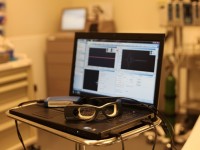Free online course in patient safety
If you follow the world of higher education, you have heard of MOOCs—massive online open courses. Open to anyone, anywhere, these free classes can attract… Read More »Free online course in patient safety
If you follow the world of higher education, you have heard of MOOCs—massive online open courses. Open to anyone, anywhere, these free classes can attract… Read More »Free online course in patient safety
 This month the Agency for Healthcare Research and Quality (AHRQ) published a new report that identifies the most promising practices for improving patient safety in U.S. hospitals.
This month the Agency for Healthcare Research and Quality (AHRQ) published a new report that identifies the most promising practices for improving patient safety in U.S. hospitals.
An update to the 2001 publication Making Health Care Safer: A Critical Analysis of Patient Safety Practices, the new report reflects just how much the science of safety has advanced.
A decade ago the science was immature; researchers posited quick fixes without fully appreciating the difficulty of challenging and changing accepted behaviors and beliefs.
Today, based on years of work by patient safety researchers—including many at Johns Hopkins—hospitals are able to implement evidence-based solutions to address the most pernicious causes of preventable patient harm. According to the report, here is a list of the top 10 patient safety interventions that hospitals should adopt now.
Read More »A roadmap for patient safety and quality improvement

Although misdiagnosis may kill up to 80,000 annually—more people each year than firearms and motor vehicle accidents combined—you won’t find it on the list of the country’s leading causes of death.
Most Americans don’t realize how frequently well-meaning medical providers get it wrong. Just last year Johns Hopkins researchers found that one in 12 ICU patients die from something other than what they were being treated for. Aside from a handful of instances covered by the national media, misdiagnosis hasn’t received much attention from the public or the medical community. One such tragedy is the death of Rory Staunton, a 12-year-old boy who was treated for an upset stomach and dehydration instead of sepsis, a severe response to infection that requires immediate treatment with antibiotics. To make a complex diagnosis like sepsis, a doctor may need to assess a couple dozen different factors.
 Maybe it's just wishful thinking, but it seems like we're reaching a critical mass where enough people are interested in improving patient safety that we can make a serious impact. In just the past week, several national media outlets have focused attention on this issue. At 4 p.m. Eastern today, I'll appear on a special segment of Katie Couric's program, "Katie!" that is devoted to the topic of medical mistakes. One takeaway from this program is that there are many things that patients and their loved ones can do to reduce the risk of medical errors and preventable complications.
Maybe it's just wishful thinking, but it seems like we're reaching a critical mass where enough people are interested in improving patient safety that we can make a serious impact. In just the past week, several national media outlets have focused attention on this issue. At 4 p.m. Eastern today, I'll appear on a special segment of Katie Couric's program, "Katie!" that is devoted to the topic of medical mistakes. One takeaway from this program is that there are many things that patients and their loved ones can do to reduce the risk of medical errors and preventable complications.
In other news, the nationally syndicated public radio program Marketplace recently ran a segment about efforts by Johns Hopkins clinicians and safety experts to reduce harm in intensive care units. Listen to the program or read the story online to learn how the team is tapping clinicians, engineers, patients and families to design an ICU that is safer and more integrated.
Read More »Katie Couric, others keeping patient safety in the national spotlight

This week marks a step that holds tremendous promise for patients and clinicians. On Monday the Masimo Foundation hosted the Patient Safety Science & Technology Summit in Laguna Niguel, California, an inaugural event to convene hospital administrators, medical technology companies, patient advocates and clinicians to identify solutions to some of today’s most pressing patient safety issues. In response to a call made by keynote speaker former President Bill Clinton, the leaders of nine leading medical device companies pledged to open their systems and share their data.
Today, an intensive care unit patient room contains anywhere from 50 to 100 pieces of medical equipment made by dozens of manufacturers, and these products rarely, if ever, talk to one another. This means that clinicians must painstakingly review and piece together information from individual devices—for instance, to make a diagnosis of sepsis or to recognize that a patient’s condition is plummeting. Such a system leaves too much room for error and requires clinicians to be heroes, rising above the flawed environment that they work in. We need a heath care system that partners with patients, their families and others to eliminate all harms, optimize patient outcomes and experience and reduce waste. Technology must enable clinicians to help achieve those goals. Technology could do so much more if it focused on achieving these goals and worked backwards from there.
In recent years, Parkland Memorial Hospital in Dallas, Texas has faced intense media scrutiny and government investigations into patient safety lapses. As the hospital searches for a new CEO, the Dallas Morning News asked me and other experts to answer the question: "What kind of leader does Parkland need to emerge as a stronger public hospital?" Below is the column, re-used with the newspaper’s permission. While it is focused on one hospital, the themes apply broadly. The type of leader that I describe is needed throughout health care.
Parkland rebuilding ‘at the speed of trust’
Public hospitals such as Parkland are a public trust, serving the community's health needs by providing safe and effective care to a population that lacks alternatives.
Major shortcomings in the quality of care provided at Parkland have eroded that trust. Now trust must be restored. The community is counting on it. It's literally a matter of life and death.
Parkland's board is searching for a new CEO to lead this journey. The CEO's task will not be easy: Resources are tight, resident supervision is insufficient, staff morale is low, systems need updating, and preventable harm is far too common.
History may provide some guidance. Historian Rufus Fears notes that great leaders - leaders who changed the world - have four attributes: a bedrock of values, a clear moral compass, a compelling vision and the ability to inspire others to make the vision happen. Parkland needs one of these great leaders.
The key values of the next CEO should be humility, courage and love -- and these values must guide the leader's behavior. Parkland will not be able to improve unless it acknowledges its shortcomings; this will take humility. Yet Parkland is a great organization with a rich past and bright future. The leader must honor the past and look forward. The leader must be able to live with the paradox of being humble yet confident.Read More »Leadership qualities for a patient-safety turnaround
Nearly a year ago, one of my blog posts bemoaned a gap in our training of future physicians—a lack of training in the skills needed… Read More »Training future physicians in safety and quality
For the past four years, Johns Hopkins patient safety researchers and our partners across the country have been working on an ambitious effort to reduce central line-associated bloodstream infections. The project spanned 44 states and included 1,100 intensive care units. On Monday, the Agency for Healthcare Research and Quality, who funded this project, released the preliminary results of this project. They report that our collective efforts have reduced infections by 40 percent, prevented 2,000 infections, saved 500 lives, and avoided $34 million in health care costs. Stunning!
Below are my prepared comments from a press conference hosted yesterday by AHRQ to share this news:
On a snowy night in February 2001, Josie King, an adorable 18-month-old girl who looked hauntingly like my daughter, was taken off of life support and died in her mother’s arms at Johns Hopkins. Josie died from a cascade of errors that started with a central line-associated bloodstream infection, a type of infection that kills nearly as many people as breast cancer or prostate cancer.
Shortly after her death, her mother, Sorrel, asked if Josie would be less likely to die now. She wanted to know whether care was safer. We would not give her an answer; she deserves one. At the time, our rates of infections, like most of the country’s, were sky high. I was one of the doctors putting in these catheters and harming patients. No clinician wants to harm patients, but we were.Read More »Is this health care’s “man on the moon” moment?
We’re pleased to announce that the Gordon and Betty Moore Foundation has awarded Johns Hopkins’ Armstrong Institute a grant of $8.9 million to design safer… Read More »Big news today from the Armstrong Institute
 Some of the best ideas for improving health care come from outside our field. For example, we’ve adapted cockpit-style checklists from aviation to improve teamwork and communication on our clinical teams. We’ve turned to performance improvement methods from manufacturing to reduce waste and defects in care delivery.
Some of the best ideas for improving health care come from outside our field. For example, we’ve adapted cockpit-style checklists from aviation to improve teamwork and communication on our clinical teams. We’ve turned to performance improvement methods from manufacturing to reduce waste and defects in care delivery.
A recent experience reminded of the value of seeking ideas and inspiration from elsewhere. As I wrote in an earlier post, I was among 15 executives from various fields who toured Cargill through a fellowship run by the Malcolm Baldrige National Quality Award Program. On a visit to Cargill Corn Milling, among the largest of the gigantic company’s 75 business units, I heard a story with unexpected parallels to health care. Cargill officials told us that their nine plants used to compete against each other. Often, two or more of their plants would submit bids to the same customer, usually with different prices. This self-competition was inefficient, didn’t meet customer needs, and cost them market share and revenue. Something needed to be done.
The Cargill leaders recognized that they needed to organize themselves around what they provide to customers (i.e. their product lines) rather than their geographically based plants. And that’s what they did. The three main product lines were human food products (largely sugar), animal feed, and fermentation such as ethanol. Rather than having each plant compete against each other, they worked together to meet customer needs.
To support this new structure, they set cascading goals in which everyone—from the employee to the plant to the product line—knew what they had to accomplish to meet corporate goals. They changed the incentive structure so that plant managers had greater motivation to ensure the company’s success, customer satisfaction, product line success and their plant’s efficiency. With this reorganization, they weren’t pitted against others at their own company.
As I listened to the presentation, my pulse quickened. I leaned forward anxiously feeling as if I took a double espresso to pull an all-night study session. The parallels between corn milling and health care were haunting.